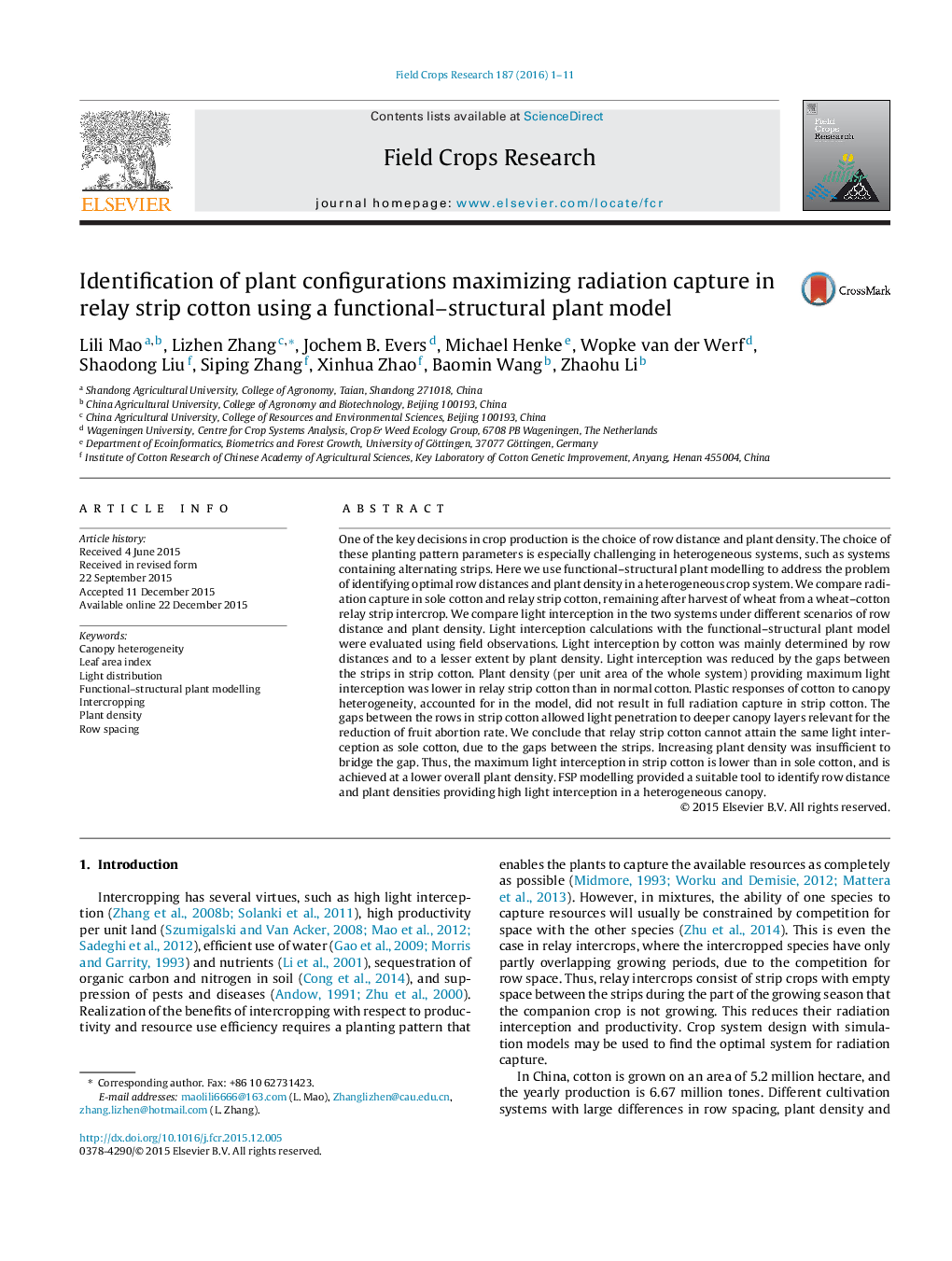| کد مقاله | کد نشریه | سال انتشار | مقاله انگلیسی | نسخه تمام متن |
|---|---|---|---|---|
| 6374718 | 1624676 | 2016 | 11 صفحه PDF | دانلود رایگان |
عنوان انگلیسی مقاله ISI
Identification of plant configurations maximizing radiation capture in relay strip cotton using a functional-structural plant model
ترجمه فارسی عنوان
شناسایی تنظیمات گیاه به حداکثر رساندن جذب تابش در پنبه رله با استفاده از یک مدل کارآمد ساختاری
دانلود مقاله + سفارش ترجمه
دانلود مقاله ISI انگلیسی
رایگان برای ایرانیان
کلمات کلیدی
ناهمگونی سایبان، شاخص منطقه برگ، توزیع نور، کارکرد مدلسازی کارخانه ساختمانی، کشت مخلوط، تراکم گیاه فاصله ردیف،
موضوعات مرتبط
علوم زیستی و بیوفناوری
علوم کشاورزی و بیولوژیک
علوم زراعت و اصلاح نباتات
چکیده انگلیسی
One of the key decisions in crop production is the choice of row distance and plant density. The choice of these planting pattern parameters is especially challenging in heterogeneous systems, such as systems containing alternating strips. Here we use functional-structural plant modelling to address the problem of identifying optimal row distances and plant density in a heterogeneous crop system. We compare radiation capture in sole cotton and relay strip cotton, remaining after harvest of wheat from a wheat-cotton relay strip intercrop. We compare light interception in the two systems under different scenarios of row distance and plant density. Light interception calculations with the functional-structural plant model were evaluated using field observations. Light interception by cotton was mainly determined by row distances and to a lesser extent by plant density. Light interception was reduced by the gaps between the strips in strip cotton. Plant density (per unit area of the whole system) providing maximum light interception was lower in relay strip cotton than in normal cotton. Plastic responses of cotton to canopy heterogeneity, accounted for in the model, did not result in full radiation capture in strip cotton. The gaps between the rows in strip cotton allowed light penetration to deeper canopy layers relevant for the reduction of fruit abortion rate. We conclude that relay strip cotton cannot attain the same light interception as sole cotton, due to the gaps between the strips. Increasing plant density was insufficient to bridge the gap. Thus, the maximum light interception in strip cotton is lower than in sole cotton, and is achieved at a lower overall plant density. FSP modelling provided a suitable tool to identify row distance and plant densities providing high light interception in a heterogeneous canopy.
ناشر
Database: Elsevier - ScienceDirect (ساینس دایرکت)
Journal: Field Crops Research - Volume 187, 15 February 2016, Pages 1-11
Journal: Field Crops Research - Volume 187, 15 February 2016, Pages 1-11
نویسندگان
Lili Mao, Lizhen Zhang, Jochem B. Evers, Michael Henke, Wopke van der Werf, Shaodong Liu, Siping Zhang, Xinhua Zhao, Baomin Wang, Zhaohu Li,
